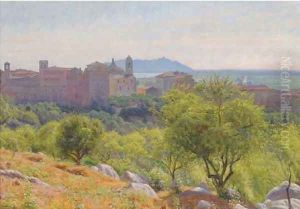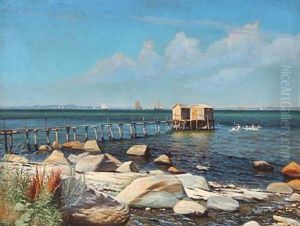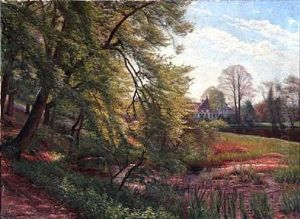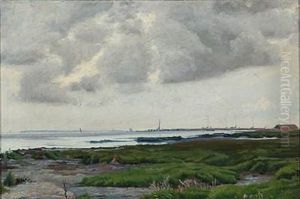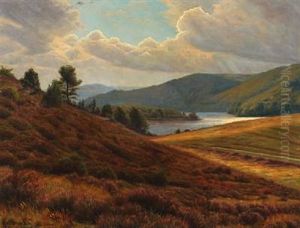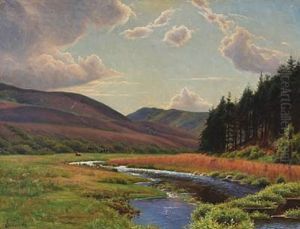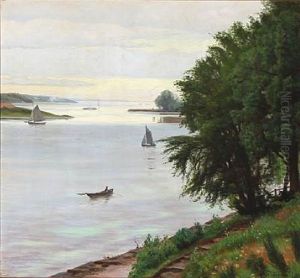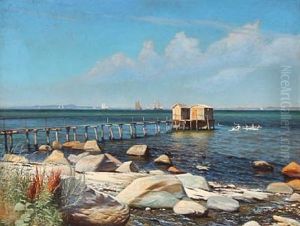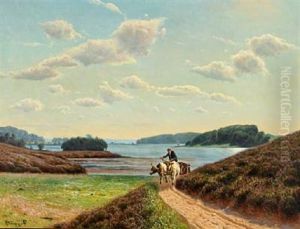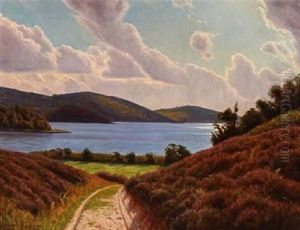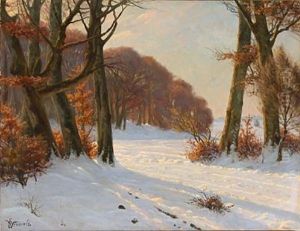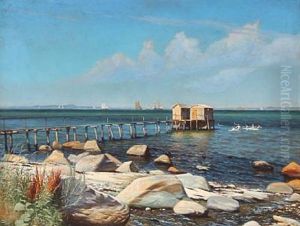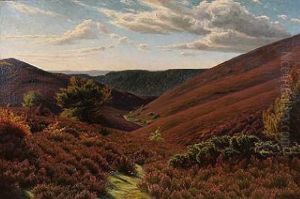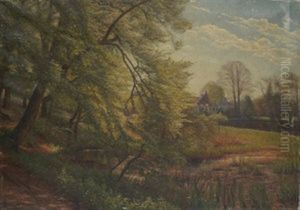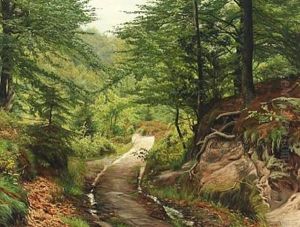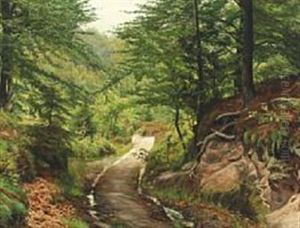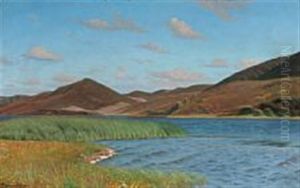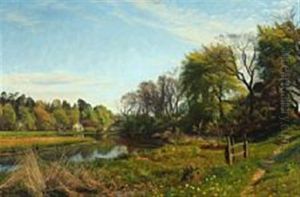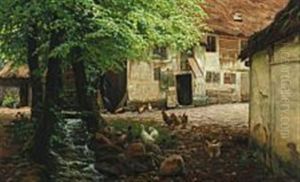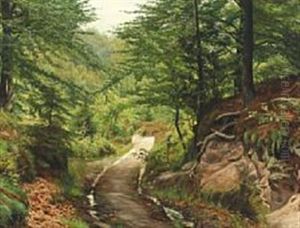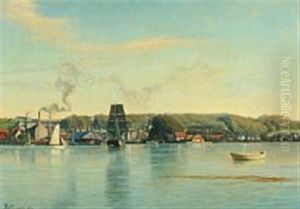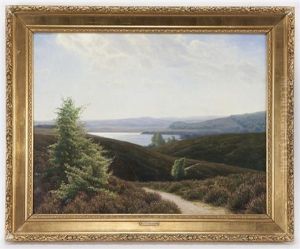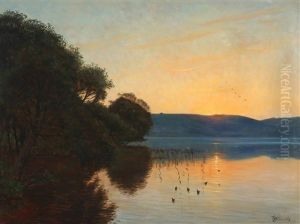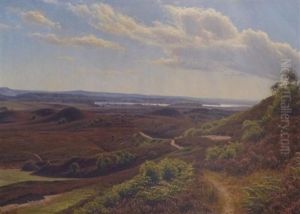Emil August Theodor Wennerwald Paintings
Emil August Theodor Wennerwald was a Danish artist born on January 2, 1828, in Copenhagen. Not as widely known as some of his contemporaries, Wennerwald was nonetheless an important figure in the Danish art scene of the 19th century. His father was a decorator, which introduced him to the world of art at an early age. Wennerwald took to the arts quickly and sought formal training to refine his skills.
He studied at the Royal Danish Academy of Fine Arts, an institution that nurtured many prominent Danish artists. During his time at the academy, Wennerwald honed his talents in painting, particularly focusing on landscapes. His works often depicted scenes of the Danish countryside, showcasing the natural beauty of the region with a romantic sensibility. He was influenced by the Golden Age of Danish Painting, a period marked by a focus on beauty, light, and the simplicity of everyday life.
Throughout his career, Wennerwald exhibited at Charlottenborg, the exhibition venue for the Royal Danish Academy of Art. His works were well-received, and he gained a reputation as a skilled landscape painter. Although Wennerwald did not achieve the same level of fame as some of his peers, his paintings contributed to the richness of Danish art during a period of cultural flourishing.
Emil August Theodor Wennerwald passed away on March 10, 1888, in Frederiksberg. His legacy survives through his contributions to Danish landscape painting, and his works can be found in various collections, including those of Danish museums. Wennerwald's dedication to capturing the serene and pastoral landscapes of Denmark remains his enduring imprint on the world of art.
